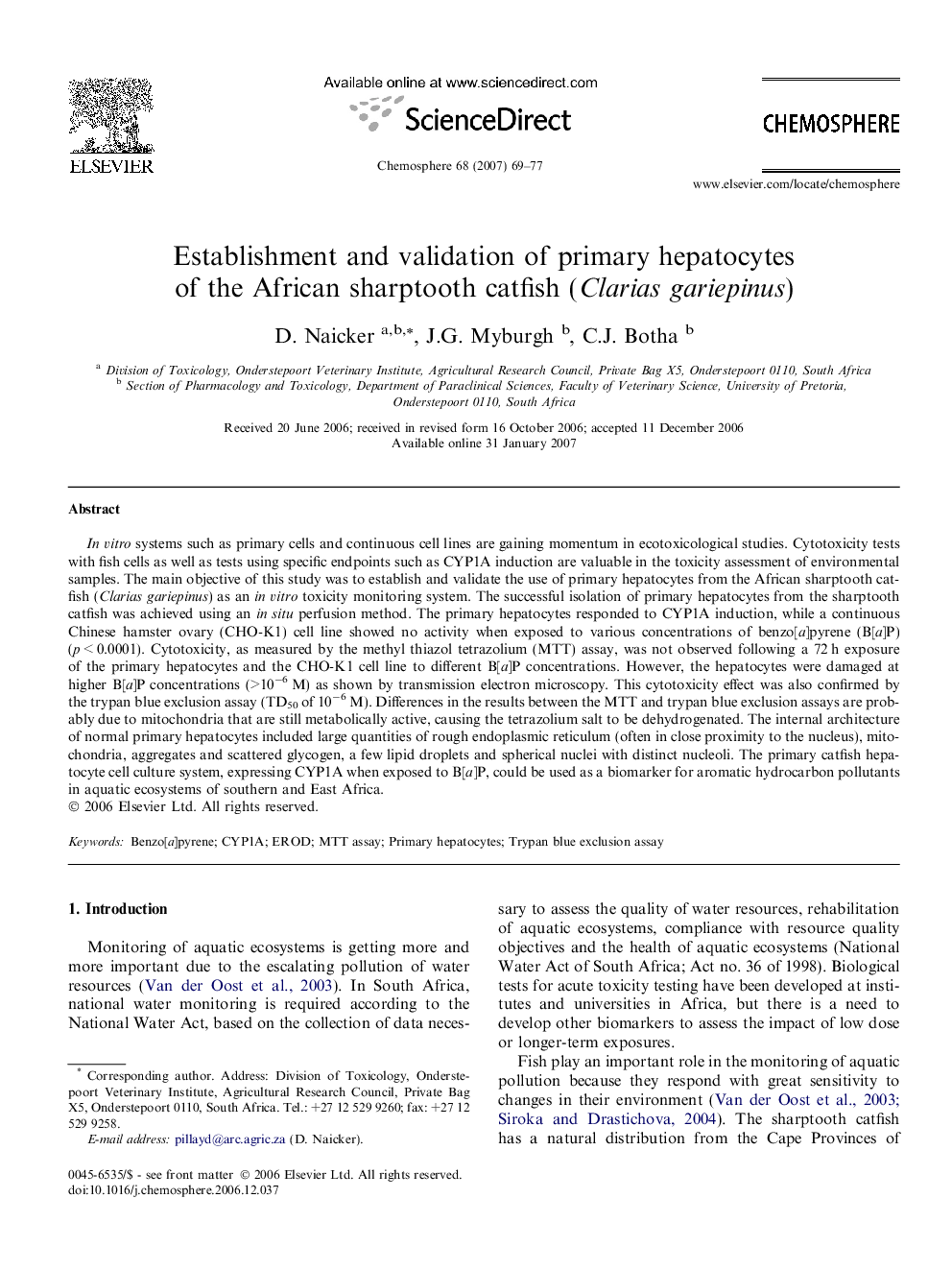| Article ID | Journal | Published Year | Pages | File Type |
|---|---|---|---|---|
| 4414813 | Chemosphere | 2007 | 9 Pages |
In vitro systems such as primary cells and continuous cell lines are gaining momentum in ecotoxicological studies. Cytotoxicity tests with fish cells as well as tests using specific endpoints such as CYP1A induction are valuable in the toxicity assessment of environmental samples. The main objective of this study was to establish and validate the use of primary hepatocytes from the African sharptooth catfish (Clarias gariepinus) as an in vitro toxicity monitoring system. The successful isolation of primary hepatocytes from the sharptooth catfish was achieved using an in situ perfusion method. The primary hepatocytes responded to CYP1A induction, while a continuous Chinese hamster ovary (CHO-K1) cell line showed no activity when exposed to various concentrations of benzo[a]pyrene (B[a]P) (p < 0.0001). Cytotoxicity, as measured by the methyl thiazol tetrazolium (MTT) assay, was not observed following a 72 h exposure of the primary hepatocytes and the CHO-K1 cell line to different B[a]P concentrations. However, the hepatocytes were damaged at higher B[a]P concentrations (>10−6 M) as shown by transmission electron microscopy. This cytotoxicity effect was also confirmed by the trypan blue exclusion assay (TD50 of 10−6 M). Differences in the results between the MTT and trypan blue exclusion assays are probably due to mitochondria that are still metabolically active, causing the tetrazolium salt to be dehydrogenated. The internal architecture of normal primary hepatocytes included large quantities of rough endoplasmic reticulum (often in close proximity to the nucleus), mitochondria, aggregates and scattered glycogen, a few lipid droplets and spherical nuclei with distinct nucleoli. The primary catfish hepatocyte cell culture system, expressing CYP1A when exposed to B[a]P, could be used as a biomarker for aromatic hydrocarbon pollutants in aquatic ecosystems of southern and East Africa.
